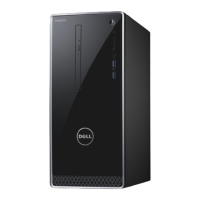Applications
USB 3.0/USB 3.1 Gen 1 opens up the laneways and provides more headroom for devices to deliver a better overall
experience. Where USB video was barely tolerable previously (both from a maximum resolution, latency, and video compression
perspective), it's easy to imagine that with 5-10 times the bandwidth available, USB video solutions should work that much
better. Single-link DVI requires almost 2Gbps throughput. Where 480Mbps was limiting, 5Gbps is more than promising. With its
promised 4.8Gbps speed, the standard will find its way into some products that previously weren't USB territory, like external
RAID storage systems.
Listed below are some of the available SuperSpeed USB 3.0/USB 3.1 Gen 1 products:
● External Desktop USB 3.0/USB 3.1 Gen 1 Hard Drives
● Portable USB 3.0/USB 3.1 Gen 1 Hard Drives
● USB 3.0/USB 3.1 Gen 1 Drive Docks & Adapters
● USB 3.0/USB 3.1 Gen 1 Flash Drives & Readers
● USB 3.0/USB 3.1 Gen 1 Solid-state Drives
● USB 3.0/USB 3.1 Gen 1 RAIDs
● Optical Media Drives
● Multimedia Devices
● Networking
● USB 3.0/USB 3.1 Gen 1 Adapter Cards & Hubs
Compatibility
The good news is that USB 3.0/USB 3.1 Gen 1 has been carefully planned from the start to peacefully co-exist with USB 2.0.
First of all, while USB 3.0/USB 3.1 Gen 1 specifies new physical connections and thus new cables to take advantage of the
higher speed capability of the new protocol, the connector itself remains the same rectangular shape with the four USB 2.0
contacts in the exact same location as before. Five new connections to carry receive and transmitted data independently are
present on USB 3.0/USB 3.1 Gen 1 cables and only come into contact when connected to a proper SuperSpeed USB connection.
HDMI 1.4
This topic explains the HDMI 1.4 and its features along with the advantages.
HDMI (High-Definition Multimedia Interface) is an industry-supported, uncompressed, all-digital audio/video interface. HDMI
provides an interface between any compatible digital audio/video source, such as a DVD player, or A/V receiver and a
compatible digital audio and/or video monitor, such as a digital TV (DTV). The intended applications for HDMI TVs, and DVD
players. The primary advantage is cable reduction and content protection provisions. HDMI supports standard, enhanced, or
high-definition video, plus multichannel digital audio on a single cable.
NOTE: The HDMI 1.4 will provide 5.1 channel audio support.
HDMI 1.4 Features
● HDMI Ethernet Channel - Adds high-speed networking to an HDMI link, allowing users to take full advantage of their
IP-enabled devices without a separate Ethernet cable
● Audio Return Channel - Allows an HDMI-connected TV with a built-in tuner to send audio data "upstream" to a surround
audio system, eliminating the need for a separate audio cable
● 3D - Defines input/output protocols for major 3D video formats, paving the way for true 3D gaming and 3D home theater
applications
● Content Type - Real-time signaling of content types between display and source devices, enabling a TV to optimize picture
settings based on content type
● Additional Color Spaces - Adds support for additional color models used in digital photography and computer graphics
● 4K Support - Enables video resolutions far beyond 1080p, supporting next-generation displays that will rival the Digital
Cinema systems used in many commercial movie theaters
● HDMI Micro Connector - A new, smaller connector for phones and other portable devices, supporting video resolutions up
to 1080p
Technology and components
31

